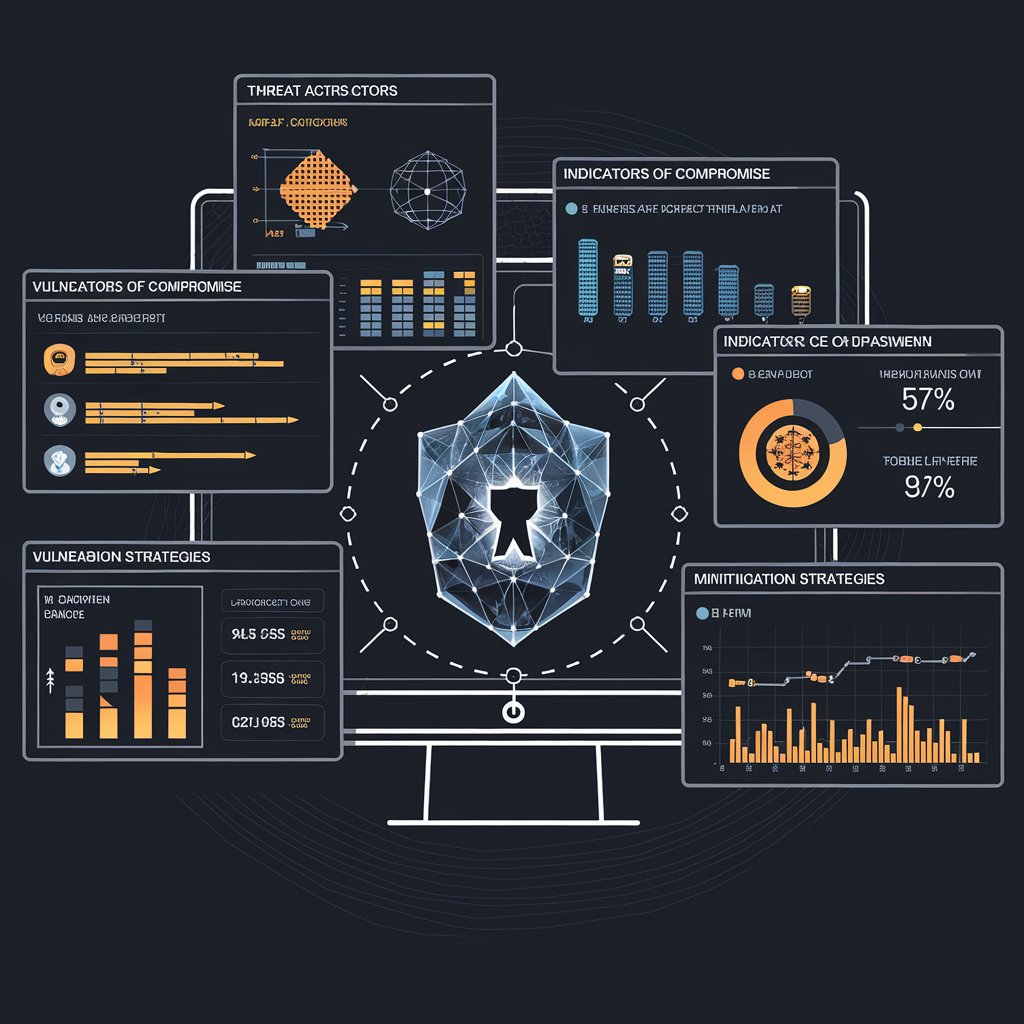UA
6 Min Read
What is Threat Intelligence?
Threat intelligence is actionable information about existing or emerging threats that can be used to make informed decisions about security. It goes beyond simply knowing that a threat exists; it provides contextual information, including:
Who: The threat actors (e.g., cybercriminals, state-sponsored hackers).
What: The types of attacks (e.g., malware, phishing, ransomware).
Where: The geographical origin of attacks and the targeted sectors.
When: The timing and frequency of attacks.
How: The tactics, techniques, and procedures (TTPs) used by attackers.
Why: The motives behind the attacks.
Why is Threat Intelligence Important for Businesses?
Threat intelligence offers a multitude of benefits for businesses, including:
Proactive Security: Allows you to anticipate threats rather than just react to them.
Improved Threat Detection: Enhances your ability to detect and respond to attacks more quickly and efficiently.
Prioritized Security Efforts: Helps you focus your resources on the most pressing threats.
Reduced Risk: Minimizes the risk of data breaches, financial losses, and reputational damage.
Enhanced Decision Making: Provides valuable insights that inform security strategies and investment decisions.
Better Vulnerability Management: Helps you identify vulnerabilities that are actively being exploited by attackers.
Compliance with Regulations: Demonstrates a proactive approach to security, which is often a requirement for various regulations.
Types of Threat Intelligence
Threat intelligence can be categorized into several types:
Strategic Threat Intelligence:
Focus: High-level information about geopolitical trends, emerging threat actors, and their motives.
Audience: C-level executives, security directors, and strategic decision-makers.
Purpose: Informing long-term security strategies and resource allocation.
Example: A report on the increasing use of ransomware by state-sponsored threat actors in a particular region.
Tactical Threat Intelligence:
Focus: Information about specific attack techniques, tools, and procedures (TTPs) used by threat actors.
Audience: Security analysts, incident response teams, and security engineers.
Purpose: Enhancing detection capabilities and incident response protocols.
Example: Analysis of a recent phishing campaign, including the techniques used to bypass security filters and the specific indicators of compromise (IOCs).
Technical Threat Intelligence:
Focus: Machine-readable data such as IP addresses, domain names, file hashes, and other indicators of compromise (IOCs).
Audience: Security systems, automated threat detection tools, and security operations centers (SOCs).
Purpose: Automating threat detection and blocking.
Example: A feed of malicious IP addresses that can be added to your firewall to block traffic from known malicious sources.
Operational Threat Intelligence:
Focus: Information about specific attacks targeting an organization and its assets.
Audience: Security operations teams, incident response teams, and security analysts.
Purpose: Understanding how attacks are carried out and improving responses.
Example: Details of a cyber attack being perpetrated against a rival organization in the same industry, including lessons learned.
How to Use Threat Intelligence to Protect Your Business
Identify Your Needs:
Determine the types of threats your business is most vulnerable to and the specific information you need.
Choose a Threat Intelligence Source:
Select credible and relevant sources of threat intelligence, such as:
Commercial Threat Intelligence Feeds: Paid subscription services that provide curated and actionable threat data.
Open Source Threat Intelligence (OSINT): Freely available information from various sources, like blogs, forums, and security reports.
Industry-Specific ISACs (Information Sharing and Analysis Centers): Organizations that share threat information among members in specific industries.
Government Agencies: Governmental cybersecurity agencies that provide threat alerts and advisories.
Threat Intelligence Platforms: Platforms that aggregate and analyze threat data from multiple sources.
Integrate Threat Intelligence into Your Security Stack:
Use threat intelligence feeds to enhance the capabilities of your security tools, such as:
Firewalls: Automatically block traffic from known malicious sources.
Intrusion Detection/Prevention Systems (IDS/IPS): Detect and prevent attacks based on threat intelligence feeds.
Security Information and Event Management (SIEM): Correlate security events with threat intelligence data.
Endpoint Protection Solutions: Identify and block malware based on known IOCs.
Automate Threat Detection:
Automate the analysis of threat data and the response to identified threats to reduce manual effort.
Prioritize Vulnerabilities:
Use threat intelligence to prioritize patching and remediation efforts based on vulnerabilities that are actively exploited by threat actors.
Regularly Review and Adapt:
Continuously monitor and evaluate the effectiveness of your threat intelligence strategy and make adjustments as needed.
Essential Tools for Threat Intelligence
Threat Intelligence Platforms (TIPs): Anomali, ThreatConnect, Recorded Future
Security Information and Event Management (SIEM): Splunk, QRadar, Microsoft Sentinel
Endpoint Detection and Response (EDR): CrowdStrike, SentinelOne, Microsoft Defender for Endpoint
Open-Source Intelligence (OSINT) Tools: Maltego, Shodan
Conclusion:
Threat intelligence is a powerful tool for enhancing your business's security posture. By proactively leveraging threat intelligence data, you can anticipate threats, strengthen your defenses, and reduce the risk of successful cyberattacks. Staying ahead of the curve requires embracing a proactive and intelligence-driven security approach.
Call to Action:
How is your business currently using threat intelligence?
What challenges do you face in implementing a threat intelligence program?
Share your experiences and ask questions in the comments below!
Key takeaways from this blog post:
Clear Definition: Explains what threat intelligence is and why it's important for businesses.
Types of Intelligence: Differentiates between strategic, tactical, technical, and operational intelligence.
Actionable Advice: Provides practical steps for using threat intelligence to improve security.
Tool Suggestions: Offers a list of helpful tools and technologies.
Non-Technical Language: Avoids excessive jargon, making the content accessible to a wider audience.
Engaging Call to Action: Encourages reader participation and questions. audit3aa
Join our newsletter list
Sign up to get the most recent blog articles in your email every week.
You can copy our materials only after making sure that your services are safe.
This site is protected by reCAPTCHA and the Google Privacy Policy and Terms of Service apply.










